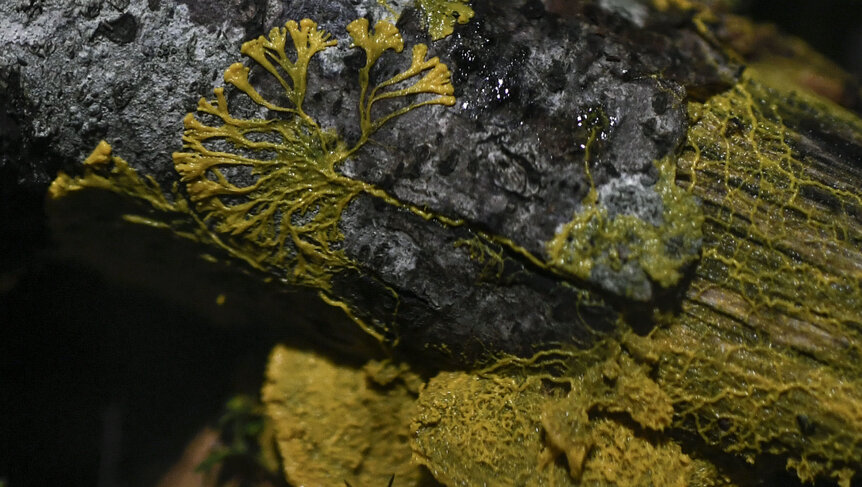Slime mold is figuring out dark matter in the universe...for real

What does the universe have in common with a brainless blob of a life-form otherwise known as a slime mold?
NASA astronomers have found another use for the slime mold’s extraordinary ability to branch out wherever it senses food (no neurons necessary). Otherwise known as Physarum polycephalum, what was thought to be a fungus, but is really an amoeba, builds surprisingly complex networks of filaments that seem to mirror the cosmic web — tentacles of dark matter that extend from one galaxy to another. Turning the slime mold’s modus operandi into a computer simulation proved to be a breakthrough in demystifying dark matter.
"It's really fascinating that one of the simplest forms of life actually enables insight into the very largest-scale structures in the universe," said team lead Joseph Burchett of UC, Santa Cruz, whose study will soon be published in The Astrophysical Journal Letters.
Slime molds seem like almost alien things. They have no brain or neurons or anything remotely resembling brain cells, but can can fuse back together with severed pieces, detect food and spread towards it, recognize edible substances they do and don’t like, and even pass on “remembered” information to new growths. This can blow the mind of anyone who has one. Scientists still haven’t figured out exactly how something that could have easily emerged from The Thing or The Blob is able to execute such sophisticated actions without actually thinking.
What the NASA team set out to do didn't need a biological explanation. Dark matter may be invisible, but slime molds have no eyes. They studied the creature’s behavior to duplicate it in the form of a computer algorithm. This algorithm, which basically told the computer how to solve a specific problem, would spread the same way a slime mold finds food, but it would instead seek out where all the filaments in the cosmic web are. It was tested against a simulation of how dark matter filaments grow and spread throughout the universe.
After making sure the algorithm would function, Burchett and his research colleagues applied it to data from the Sloan Digital Sky Survey, including the locations of 37,000 galaxies that had been mapped about 300 light-years from Earth. The virtual slime mold produced a 3D cosmic web map in minutes when culturing an actual one in a petri dish can take days. The astronomers then challenged their algorithm further by having it find quasars that Hubble spotted billions of light-years away.
Quasars, which are powered by supermassive black holes surrounded by accretion discs full of star stuff, emit flashes of light over 100 times brighter than their host galaxy. This light blazes through the cosmic web. It also has telltale imprints of absorbed hydrogen gas that would have otherwise been undetectable. The points at which the algorithm found that gas were far enough from the galaxies for the team to conclude that the hydrogen was linked to the cosmic web, which means that intergalactic gas in denser regions forms filaments that can crawl over 10 million light-years from any galaxy.
"By using the slime-mold simulation to find the location of the cosmic web filaments, including those far from galaxies, we could then use the Hubble Space Telescope's archival data to detect and determine the density of the cool gas on the very outskirts of those invisible filaments,” Burchett said. “Scientists have detected signatures of this gas for several decades, and we have proven the theoretical expectation that this gas comprises the cosmic web."
Maybe a slime mold should be the next organism we send into space.
(via NASA)





























